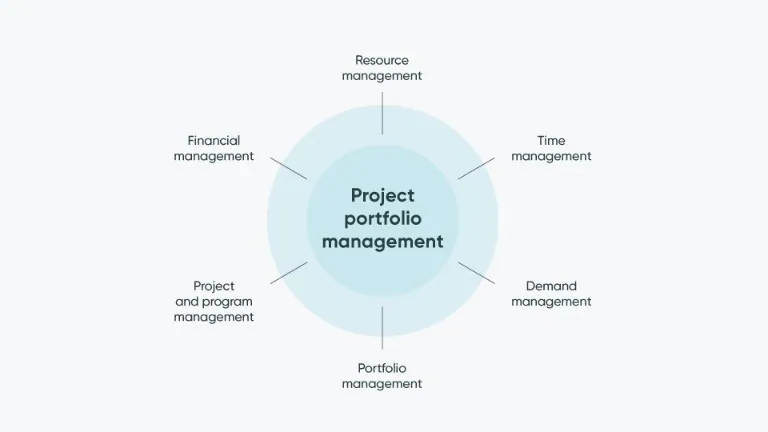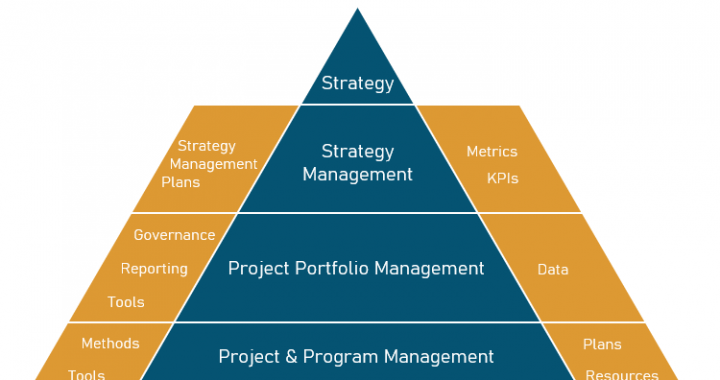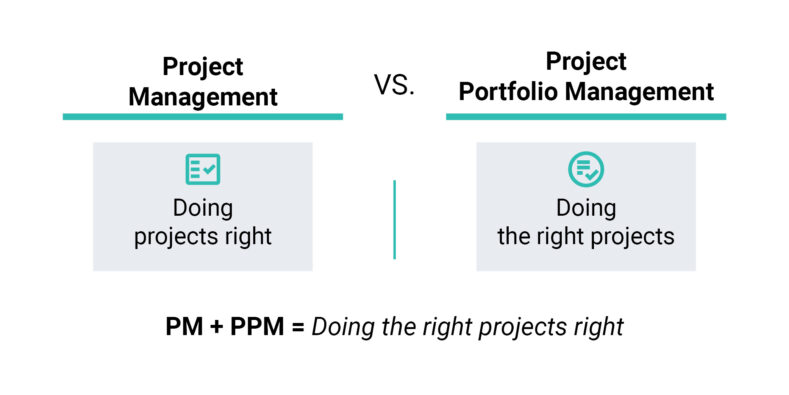The process of reviewing and improving the costs, resources, technology, and procedures for all the projects and programs within a portfolio is known as project portfolio management (PPM). A project manager or PMO generally handles PPM.
PPM’s primary purpose is to ensure that all of the portfolio’s outputs contribute to the organization’s strategic goals and business objectives. The portfolio manager or PMO does this by doing business analyses, monitoring budgets, and forecasting while lowering risk and controlling stakeholder expectations.
PPM solutions frequently gather and analyze data to ensure that the project portfolio aligns with the organization’s broader strategic planning and goals. For managing project portfolios, ProjectManager provides various effective yet simple tools, including spreadsheets, calendars, Gantt charts, resource allocation tools, cost tracking tools, and much more.

Successful Project Portfolio Management (PPM) Process
A successful PPM process is critical to the success of any portfolio management strategy. Regardless of your portfolio, you must have a clear plan for how you will keep an eye on the big picture. Concentrating on a single project increases the danger of increasing expense and lowers ROI. However, you may concentrate efforts on the appropriate tasks at the appropriate moment by centralizing the administration of projects as a portfolio.
Additionally, a centralized strategy gives managers a solid platform to deliver successful projects, beginning with a reliable PPM procedure.
Make Sure That Projects Align With Current Strategy
Aligning projects with the current strategy is an essential step in project management. The selection, introduction, and classification of projects are all covered by this process group. It should also provide current details on how initiatives fit with strategic objectives and live operational guidelines. This strategy provides for the management of the portfolio as a whole while allowing for the evaluation of specific initiatives.
The alignment process group also includes information on what types of resources are needed during each phase of production or delivery. For example, if a new product is being developed by a team of engineers working under tight deadlines but with limited budgets.
Monitoring & Controlling Process Group
The monitoring and controlling process group analyses performance metrics and keeps track of how they match strategic goals. It guarantees that the whole portfolio meets the organization’s predetermined metrics. Such measurements can, for instance, include ROI or net present value. You might track performance using the measures either individually or collectively. Even specific portfolio elements are occasionally monitored.
In addition, a portfolio manager will be involved in the day-to-day decisions related to the portfolio’s operations; this includes monitoring and controlling financials as well as monitoring and controlling operational KPIs like the cost of sales.

What Is A Project Portfolio Manager, And What Does The Job Involve?
A project portfolio manager is a person who oversees the management of a project portfolio. The projects included in the portfolio can be approved or rejected by the project portfolio management. The role is responsible for getting a return on investment and meeting the goals and objectives of the organization.
You may assign one or more portfolios to the portfolio manager. To accomplish the task of matching projects to the strategic goals of their firm, they work with various portfolio management tools, financial algorithms, and models. They are also supported by a set of standards and valuation criteria that assist them in managing portfolios.
The PMO is often responsible for deciding how to manage projects or portfolios. This response can include setting up a process that will give clear instructions to project managers about what they must do to build a successful project. The PMO will also work with the project portfolio manager to ensure that all the necessary steps for creating a successful project are taken.
How To Evaluate, Select, And Prioritize Projects In Portfolio Management?
Several PPM methodologies offer a systematic method for assessing, choosing, and prioritizing elements of the lifetime of portfolio management’s alignment process group.
Here are five PPM tools that you can use in portfolio management:
- Cost-benefit analysis is a formula used to analyze the rewards and risks of every activity. A project has a better chance of success if the cost is lower and the benefit is higher.
- Decision tree analysis is a visual method for qualitative analysis that is particularly useful for assessing situations influenced by various subjective elements. PPM tools construct fictitious situations and offer a framework for assessing potential outcomes.
- Using weights and scores, a scoring model connects a choice’s quantitative and qualitative aspects. The method establishes a logical foundation for putting the highest-scoring projects first.
- Estimated Commercial Value (ECV): To assess the chances of success for commercial and technical initiatives, ECV includes risk in a calculation comparable to Net Present Value (NPV).
- The high-level organizational strategy is divided into several business objectives using the objectives matrix approach, and projects are given ratings based on how well they correspond with each target. The matrix enables sub-goals to be considered to develop a straightforward method of comparing projects to goals.

Project Portfolio Management Vs. Project Management: What Are the Differences?
The connection between project management and project portfolio management and enterprise management. It is responsible for ensuring that the strategic direction of a business is being implemented through projects. Enterprise management focuses on a business’s overall health, growth, and ability to compete in the marketplace.
Project management is concerned with planning, executing, and controlling projects, while project portfolio management focuses on managing the result of those projects.
Project portfolio management is a relatively new discipline that has been popularized using the Balanced Scorecard approach. Project managers use this approach to prioritize and manage projects within their organizations and those that are external to the organization. The two primary inputs for project portfolio management are strategy and objectives.
Strategy is used to set the overall direction for an organization’s activities. Objectives guide the selection of specific goals that must be achieved during a project’s life cycle, while tasks define how you will accomplish them.
Project portfolio management differs from project management in that it focuses on more than one project at once, while project management only focuses on one at a time. It leads to the ultimate goal of meeting the organization’s strategic goals.
Why the right Project Portfolio Management tool is a must?
The ideal PPM solution supports and enhances the involved individuals and processes, providing insight into every aspect of your portfolio. In addition, coordinating project selection with your organization’s budgeting procedures ensures that initiatives meet priorities and fiscal support budgets and are feasible with the personnel at hand.
The wrong PPM tool can lead to costly mistakes and lost time. However, when you select an excellent PPM tool, you can be confident that your decisions will help drive your business forward.
Here are some of the must-have attributes and functions for PPM software:
- Strategic planning
- Capital planning
- Opportunity management
- Project development
- Resource management
- Portfolio analysis and reporting
- Stage gates and automated workflows
Conclusion
Project portfolio management involves the optimal deployment of resources, strategic plans, technology, and tools to achieve your business objectives. First, make sure your projects are being managed effectively and efficiently! Then, project portfolio management is a method and tool that allows managers to keep track of all the projects assigned to their team and tweak them if and when necessary. The various project management best practices that EPC Group implements for its clients result from the growing need and importance of project portfolio management.










